A Hidden Surprise in a Most Unexpected Place…
As gardeners, most of us are used to finding surprises in the garden. Some are welcome and some are not. Yesterday, as I walked outside in my front garden, I was greeted by the following sight….
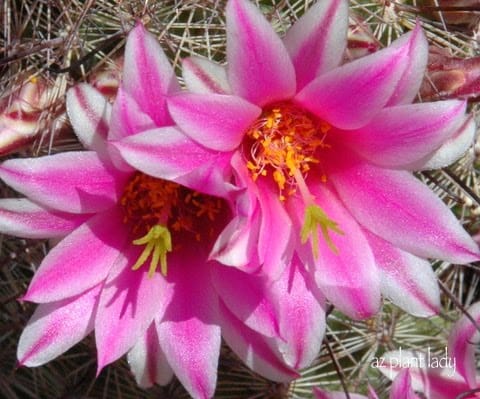
Aren’t these flowers just beautiful?
I would love to share with you the story of how I discovered the plant the produces these very pretty pink flowers…..
Fresh out of college, armed with a degree in horticulture my first job was to manage the landscape areas and trees of a golf course. On a good day, I would have a couple of crew members along to help as long as there was not too much to do on the golf course. The golf course itself rested around a desert mountain and the grassed areas actually made up a small part of the golf course. Landscape areas flanked the golf course while the surrounding hills remained untouched.
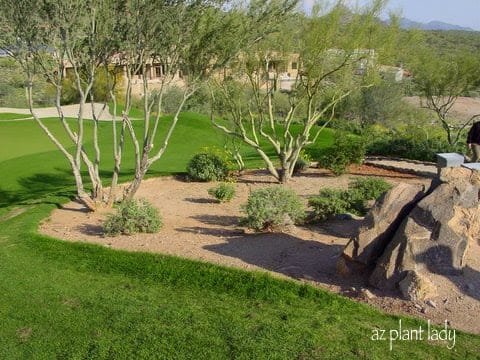
Golf course feature area with Ironwood trees (Olneya tesota), Little Leaf Palo Verde (Parkinsonia microphylla), Bursage (Ambrosia deltoidea) and Brittlebush (Encelia farinosa).
Unfortunately, some of the ‘untouched’ desert areas were designated for future homes and were due to be cleared. Before an area was to be cleared I would venture out with my crew and harvest what cacti and native plants that I could. We would then replant them around the golf course.
Much of the native desert in our area is covered by a low-growing shrub known as Bursage (Ambrosia deltoidea). Certain times of the year, it is leafless and ugly. However in the rainy season, they are covered with sage green leaves that you can see in the photo above.
It was during the month of April that I glimpsed a spot of pink underneath a particular Bursage. As I walked closer to it, I found a little cactus, covered in rings of pink flowers.

Finding surprises
Known by various names such as Pincushion Cactus or Arizona Fishhook Cactus (Mammillaria grahamii or Mammillaria microcarpa), I was so excited with my discovery. Armed with a pick, my foreman and I quickly dug it up in order to save it from the coming bulldozers. We then began to look to see if we could find more of these little cacti in areas soon to be bulldozed.
If it had not been for the fact that they were flowering, it would have been much harder to find them – they only grow to about 6 inches tall at maturity. But I started seeing glimpses of pink everywhere. We started walking all over the desert areas slated to be leveled for homes and were able to save countless little cacti.
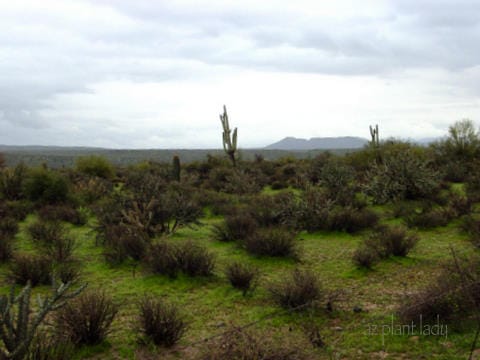
This is ‘untouched’ desert and part of the Tonto National Forest. The low shrubby plants are what Bursage looks like before they leaf out. The small cacti often hide underneath.
Nowadays, whenever I visit a client whose homes are surrounded by native desert, I often look to see if I can find any of these cacti. I love to show the homeowner the surprise that lurks beneath their somewhat boring Bursage.
You do have to look closely, especially when they aren’t flowering.
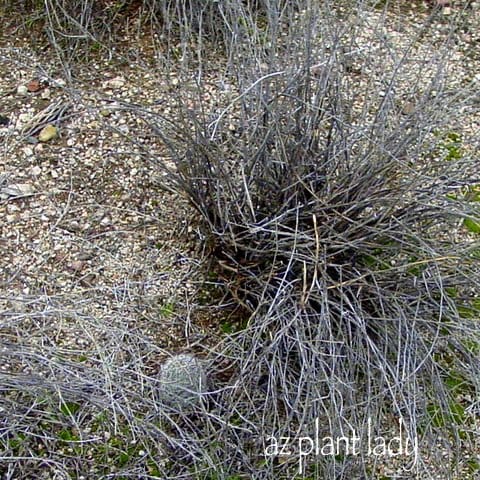
It blends fairly well doesn’t it? Actually, it is hard to believe that the ugly, leafless Bursage has anything of value underneath. The cactus is rather boring when not in flower. But just wait until spring and summer arrive….
Back when I worked at the golf course, my boss gave me permission to take a cluster of little cacti home to plant in my garden. **Note, this is a protected species and cannot be removed unless on private land with the owner’s permission.
I planted my Fishhook Cactus over 10 years ago and each year, the clump grows larger and produces more flowers.

Finding surprises
One of my favorite things about my Fishhook Cactus is that it blooms repeatedly in the summer months in response to the rain. Once it has finished blooming, small, bright red fruits are formed that are edible – they have a tart taste.
One of the common names, Arizona Fishhook Cactus, comes from the fact that their spines are hooked.
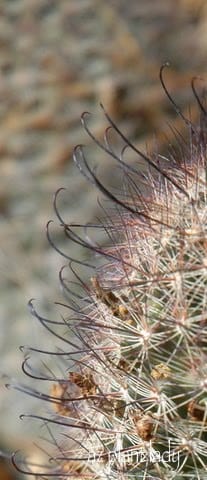
My garden has very few cacti and this one is my favorite. When the day comes that we move from our home, I will dig up my favorite cactus and take it wherever I go 🙂

 Noelle Johnson, aka, 'AZ Plant Lady' is a author, horticulturist, and landscape consultant who helps people learn how to create, grow, and maintain beautiful desert gardens that thrive in a hot, dry climate. She does this through her consulting services, her online class Desert Gardening 101, and her monthly membership club, Through the Garden Gate. As she likes to tell desert-dwellers, "Gardening in the desert isn't hard, but it is different."
Noelle Johnson, aka, 'AZ Plant Lady' is a author, horticulturist, and landscape consultant who helps people learn how to create, grow, and maintain beautiful desert gardens that thrive in a hot, dry climate. She does this through her consulting services, her online class Desert Gardening 101, and her monthly membership club, Through the Garden Gate. As she likes to tell desert-dwellers, "Gardening in the desert isn't hard, but it is different."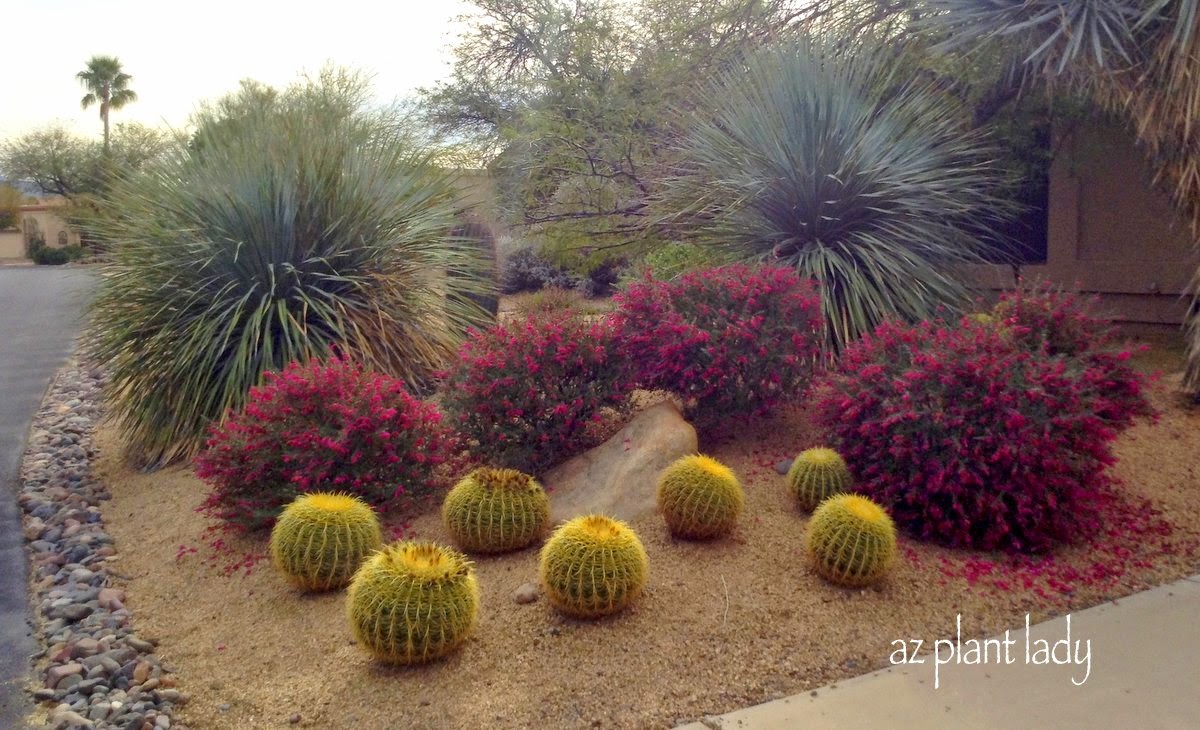
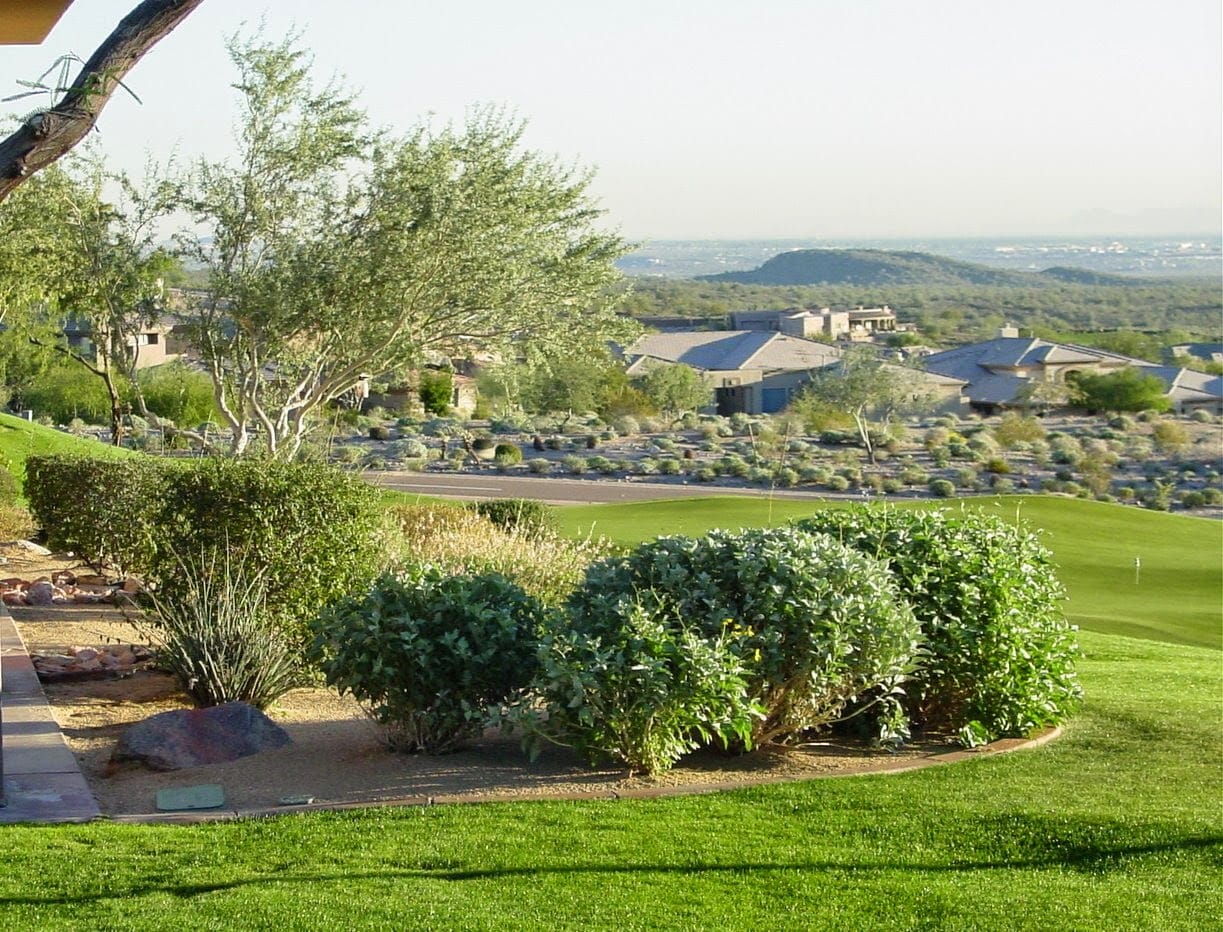
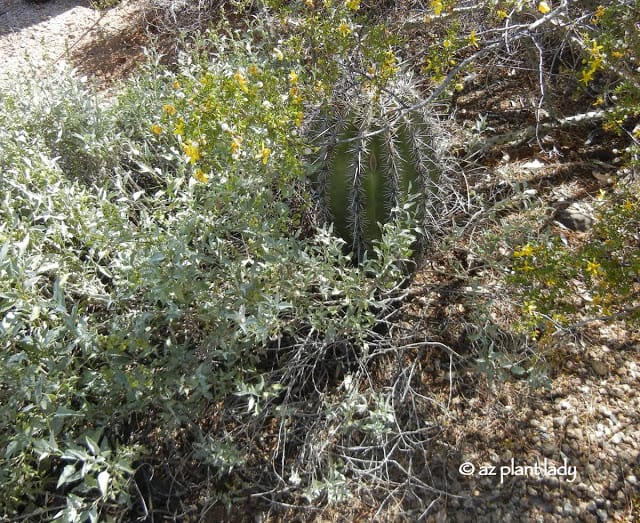
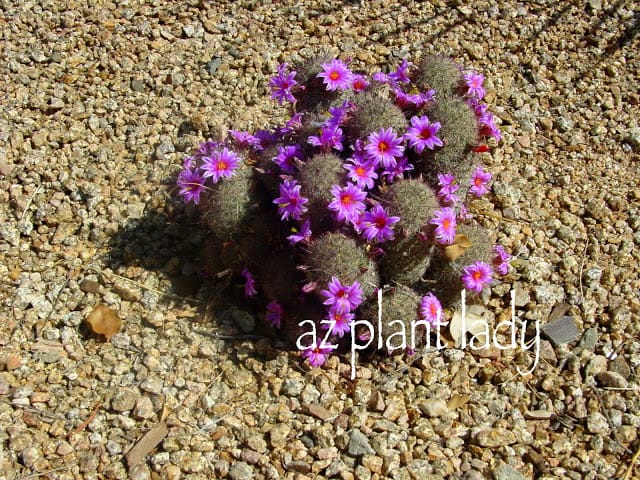








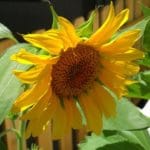

This reminds me of the Pediocacti that grow on our property. They have pink blooms as well. Yours looks like it has a delicate wreath of flowers. I like this surprise! The desert sure has some lovely blooms that are vibrant compared to the surroundings.
What a darling little plant! I can see why it's a favorite. 🙂
Dear Noelle, What a charming plant, which just looks like the head of an angel with its pinky halo. These are indeed very pleasant surprises to find as opposed to the rather unwelcome surprises in the garden that as gardeners we get used to.
I love the thought of you as a woman with a mission to save these pretty plants from the clutches of bulldozers.
What a lovely surprise it must have been that first time Noelle, and now something to look forward to each year… and after a rain. I love the desert photos. It is great you were able to save many from the bulldozers. ;>)
Make the bursage wild rosemary, and the cactus a Haworthia or Gasteria and I told the same story in the Karoo National Botanical Garden. It works for Mother Nature in Arizona and in the Karoo. That is why those little succulents need a little shade in our gardens … ;>)
Adorable!
We have a number of these growing in our plot of desert and they are putting on a show right now.
We also have some in containers and they bloom a few times during the year; generally after a generous rain!
They are truly remarkable!
Unfortunately, the Javelinas take a bite out of them every once in a while (Ouch!).
love your story and those beautiful pink flowers do look just like a halo.
Noelle this plant is gorgeous. Those little pink flowers are fantastically beautiful. And your shots of them are perfect. Love the story behind them. I am so glad that you saved so many. More people should do this before they get destroyed. I would take it with me too if I moved anywhere.
wow Noelle, how lovely those treasures are! I love to have them too, and most especially because they need little attention. The flowers are also big as correlated to the plants. BTW, i am a horticulturist too, though my specialization is Postharvest Physiology, hehe, but i love ornamentals too.
Oh, how pretty…I love this.
Balisha
Hello Noelle
That was a good idea to ask for a little cacti to take home. I like the way certain plants in the garden hold memeories for us that we can share as we walk others around our gardens.
🙂 Rosie
What a sweet little lurker. 🙂 And now you have more than just a pretty plant, but one with a history, bonded to you and your learning curve. Lovely story, Noelle!
those little lovely flowers look like crowns adorning the heads of each cactus. beautiful indeed.
Noelle, these cacti blooms are fantastic! Like an oasis in the middle of the desert…well, I suppose they are, aren't they? Two of my cacti recently bloomed for the first time…wonderful surprise and fabulous blooms! Very nice post!
What a lovely surprise, Noelle! These flowering cacti look as if they have leis on their heads:) I've probably seen these in the AZ desert before, but I never would have guessed they could have such pretty blooms. Those fishhook spines look a little dangerous, though; hope you haven't had any accidents while planting them!
They are like little desert gnomes wearing flower wreaths around their heads! I think yours is especially pretty with all of them clustered together. What a nice surprise to find under dried brush!